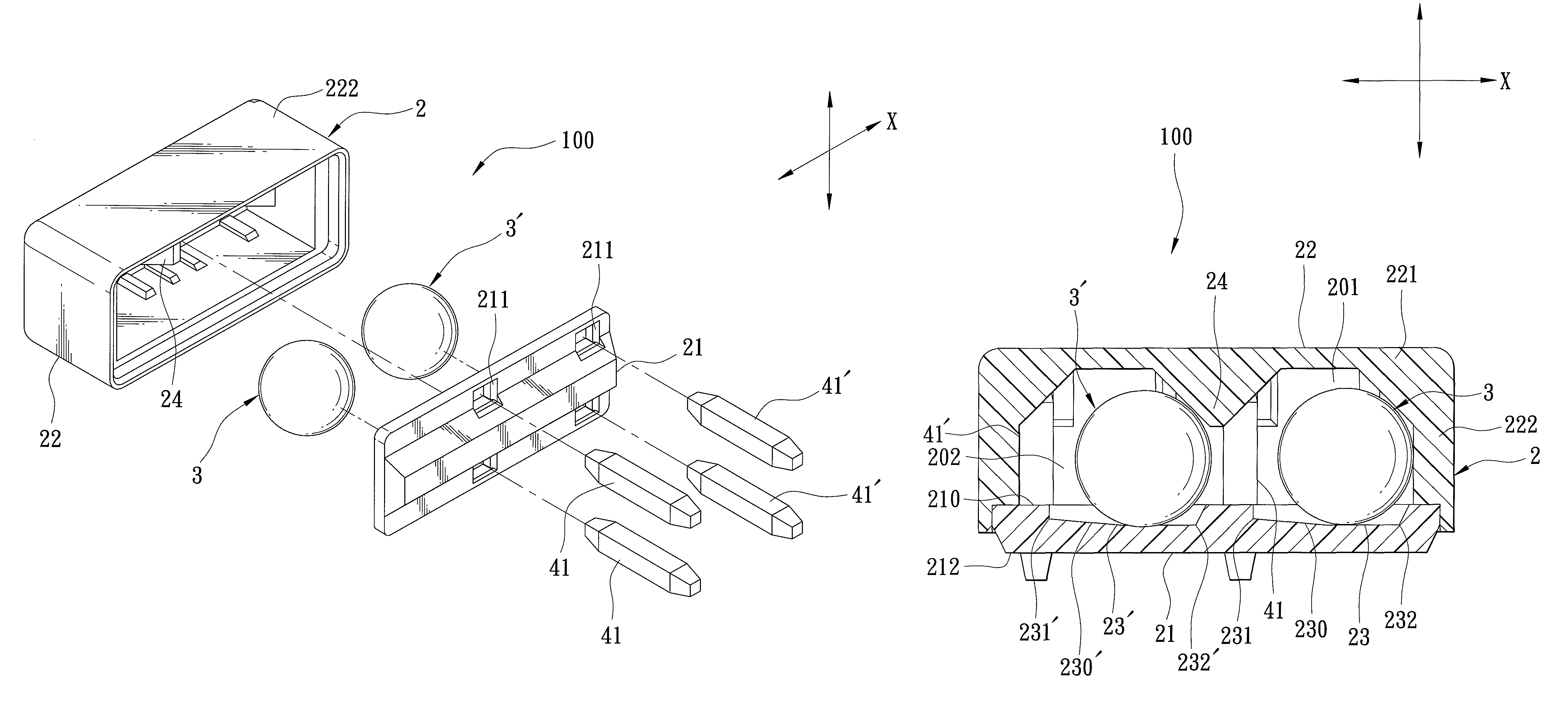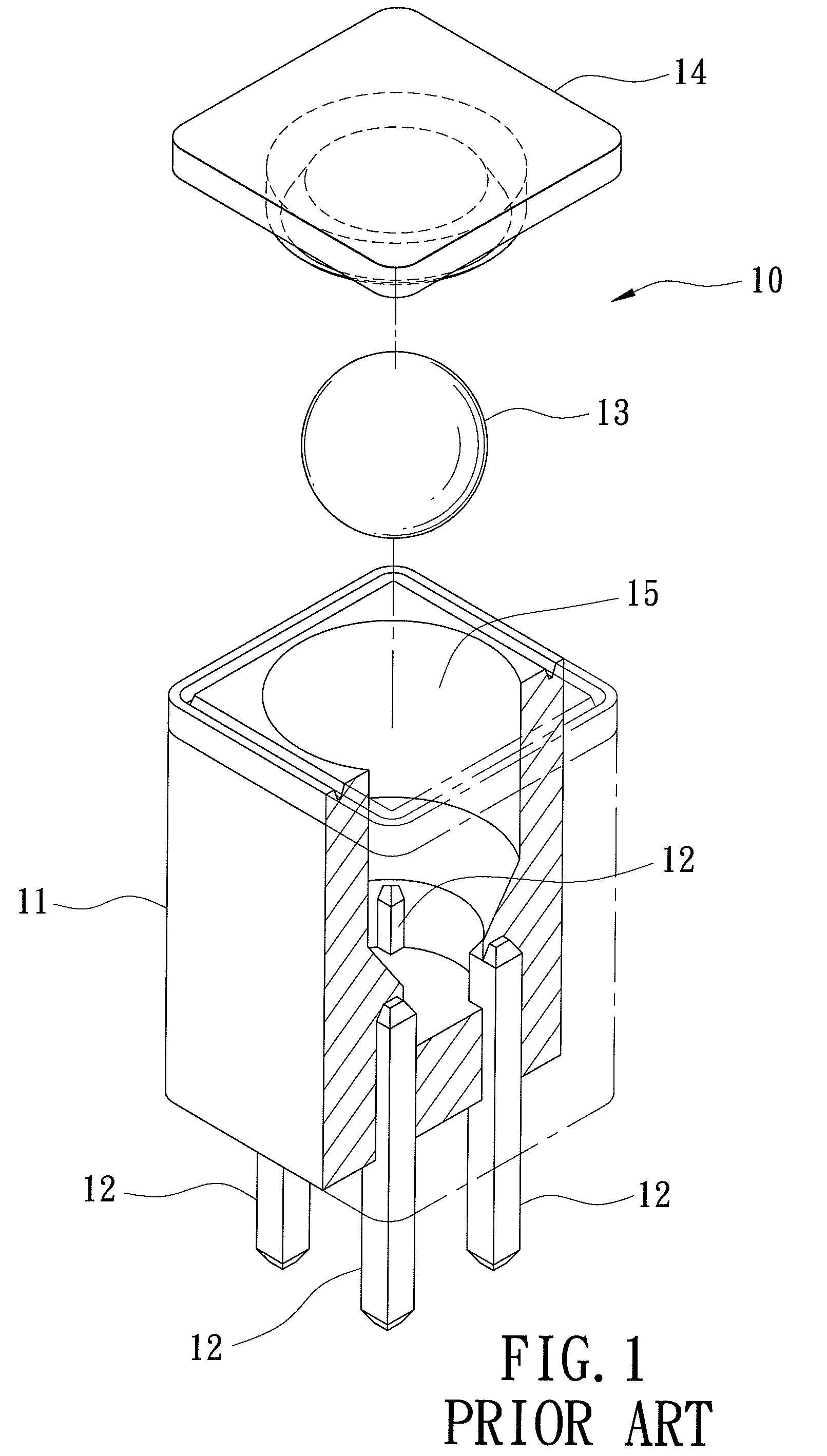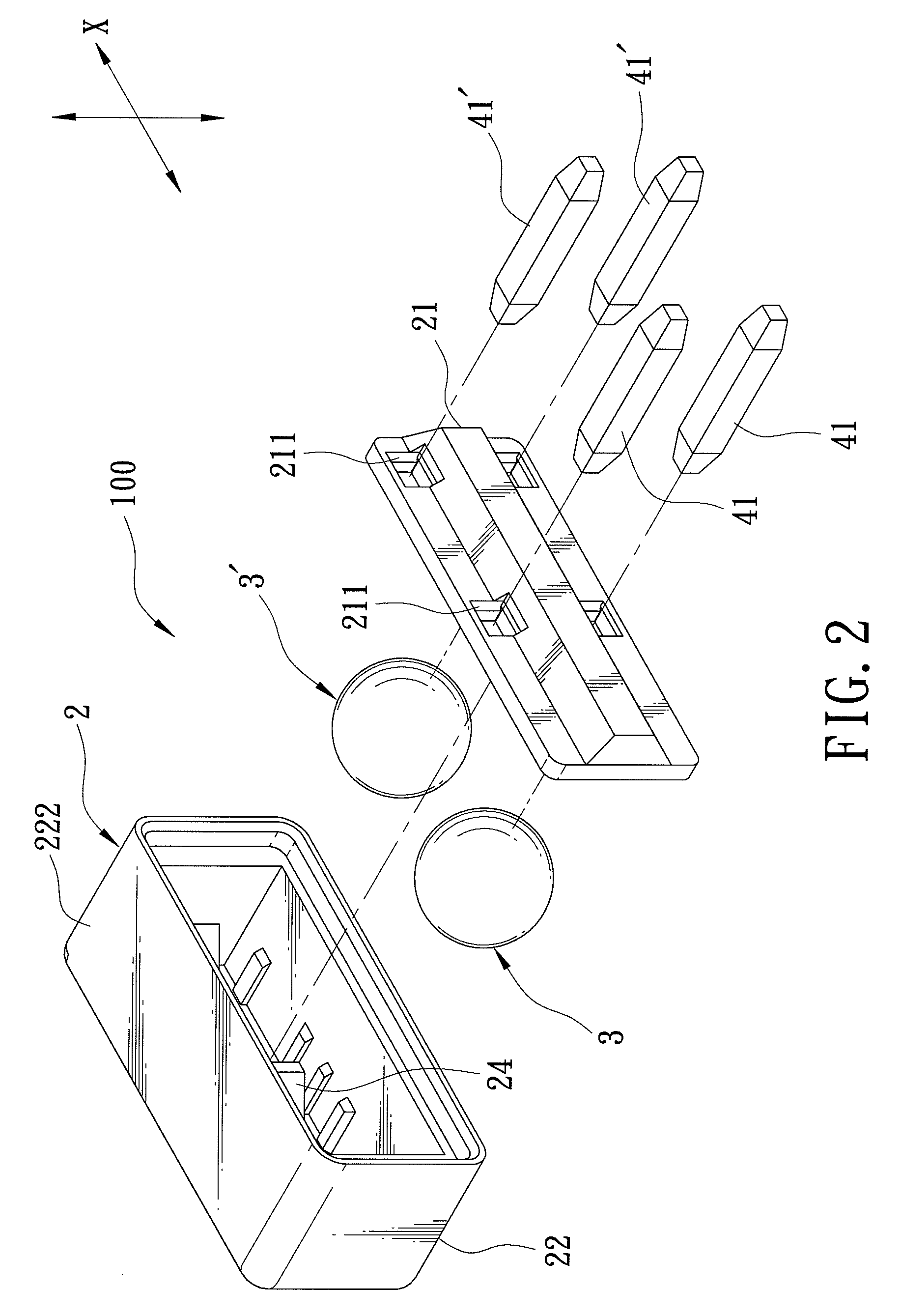Rolling-ball switch
a ball-vibration switch and rolling ball technology, applied in the field of switches, can solve the problems of limited use of conventional ball-vibration switches, inconvenient use, and inability to ensure the reliable operation of switches b>10/b>
- Summary
- Abstract
- Description
- Claims
- Application Information
AI Technical Summary
Benefits of technology
Problems solved by technology
Method used
Image
Examples
Embodiment Construction
[0022]Before the present invention is described in greater detail, it should be noted that the same reference numerals have been used to denote like elements throughout the specification.
[0023]Referring to FIGS. 2 to 6, a rolling-ball switch 100 according to the first preferred embodiment of the present invention is shown to comprise a housing 2, two conductive balls 3, 3′, a pair of first terminals 41, and a pair of second terminals 41′.
[0024]The housing 2 is made of plastic, and includes a casing part 22, and a plate part 21 that serves as a bottom wall of the housing 2 and that is connected to and that cooperates with the casing part 22 to define two receiving sections 201, 202. The plate part 21 has an inner surface 210 formed with two holding grooves 23, 23′ disposed respectively in the receiving sections 201, 202, an outer surface 212, and two pairs of spaced-apart through holes 211 extending through the inner and outer surfaces 210, 212 thereof and surrounding the holding gro...
PUM
 Login to View More
Login to View More Abstract
Description
Claims
Application Information
 Login to View More
Login to View More - R&D
- Intellectual Property
- Life Sciences
- Materials
- Tech Scout
- Unparalleled Data Quality
- Higher Quality Content
- 60% Fewer Hallucinations
Browse by: Latest US Patents, China's latest patents, Technical Efficacy Thesaurus, Application Domain, Technology Topic, Popular Technical Reports.
© 2025 PatSnap. All rights reserved.Legal|Privacy policy|Modern Slavery Act Transparency Statement|Sitemap|About US| Contact US: help@patsnap.com



